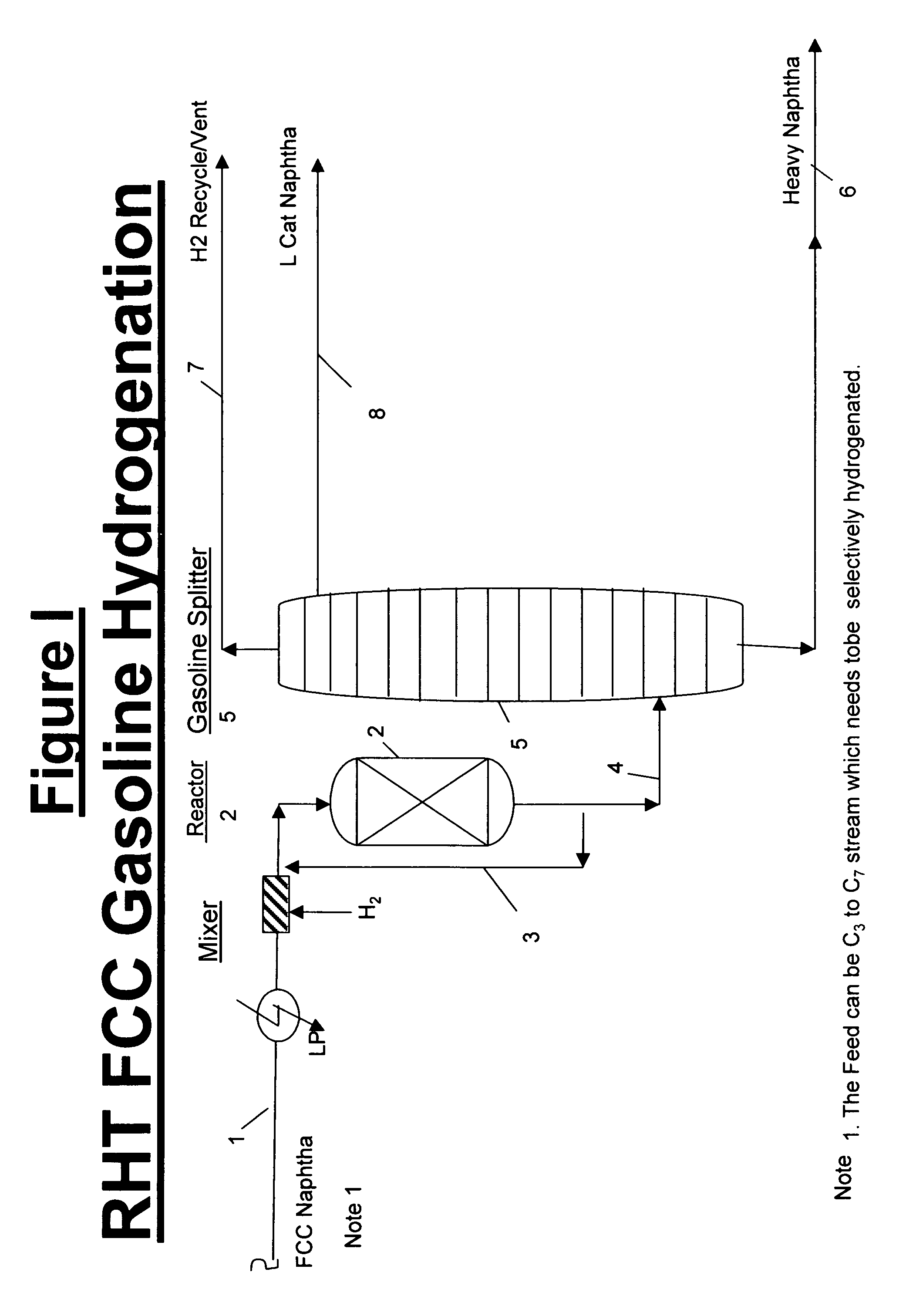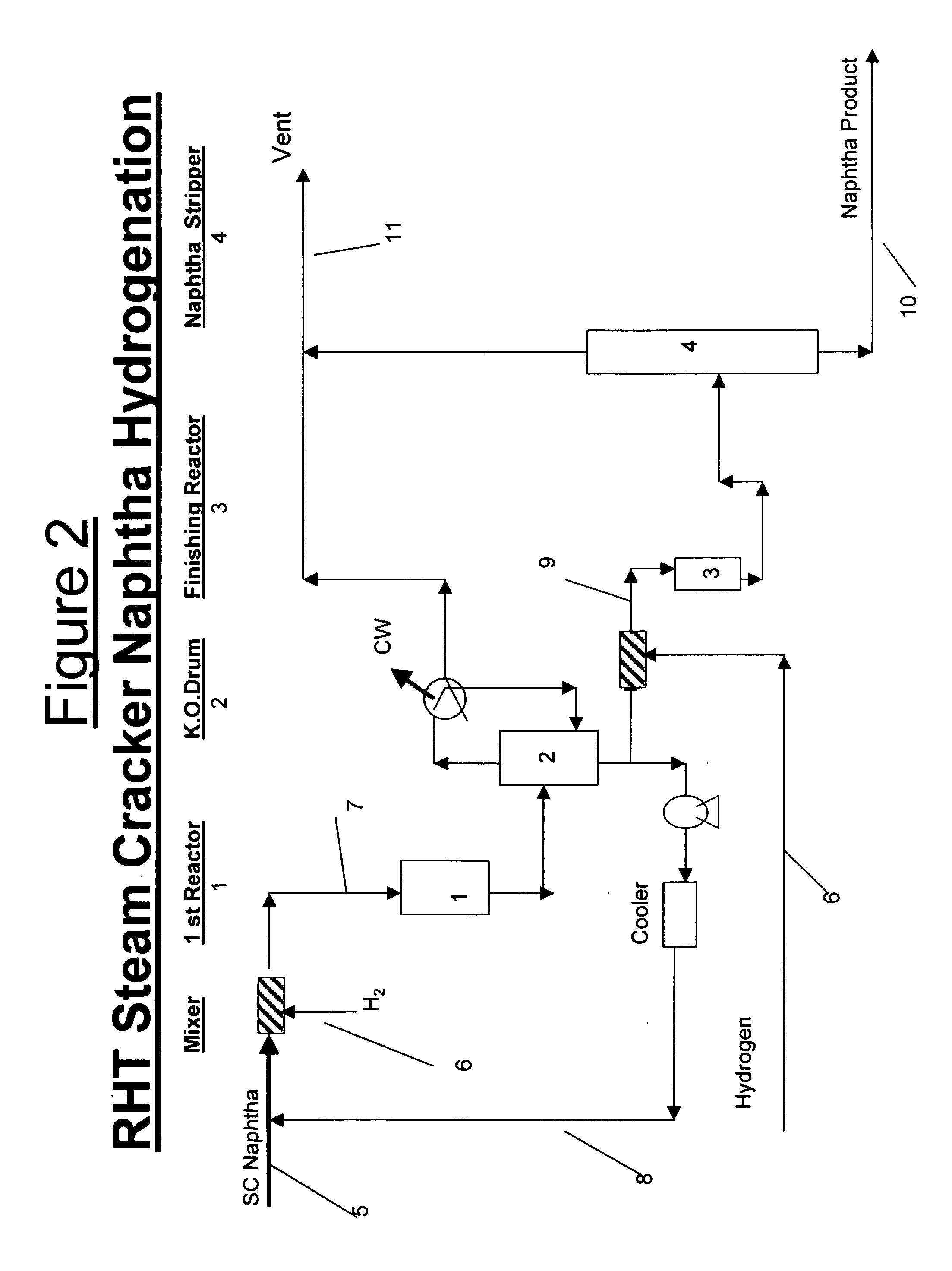Optimum process for selective hydrogenation/hydro-isomerization, aromatic saturation, gasoline, kerosene and diesel/distillate desulfurization (HDS). RHT-hydrogenationSM, RHT-HDSSM
a hydrogenation/isomerization and aromatic saturation technology, applied in the direction of hydrocarbon oil cracking, aromatic hydrocarbon hydrogenation, organic chemistry, etc., can solve the problems of not being flexible and not good, and achieve the effect of not being good in economics
- Summary
- Abstract
- Description
- Claims
- Application Information
AI Technical Summary
Benefits of technology
Problems solved by technology
Method used
Image
Examples
Embodiment Construction
[0023]RHT is an emerging technology developer with a new and unique configuration, optimizing the conventional technology schemes, by reducing the equipment count by integrating the external reactor with the up stream column, this eliminates the need for stripper / stabilizer and associated equipment. This configuration allows reactors to be operated at optimum conditions, which enhances the selectivity. In isomerization of alpha to beta olefins or visa versa, and selective hydrogenation applications it provides optimum flow scheme with successive reactors to enhance the selectivity and can meet the product specifications to 10 wppm of diolefins. It provides similar approach for crude C4's from steam cracker with high content of diolefins to meet the low diolefin product as per the FIG. 2. The configuration in the FIG. 1, with the understanding so as to remove the mercaptan and lighter sulfur compounds are desulfurized and diolefins are also saturated to olefins, so that LCN recovery ...
PUM
| Property | Measurement | Unit |
|---|---|---|
| pressure | aaaaa | aaaaa |
| pressure | aaaaa | aaaaa |
| pressure | aaaaa | aaaaa |
Abstract
Description
Claims
Application Information
 Login to View More
Login to View More - R&D
- Intellectual Property
- Life Sciences
- Materials
- Tech Scout
- Unparalleled Data Quality
- Higher Quality Content
- 60% Fewer Hallucinations
Browse by: Latest US Patents, China's latest patents, Technical Efficacy Thesaurus, Application Domain, Technology Topic, Popular Technical Reports.
© 2025 PatSnap. All rights reserved.Legal|Privacy policy|Modern Slavery Act Transparency Statement|Sitemap|About US| Contact US: help@patsnap.com



